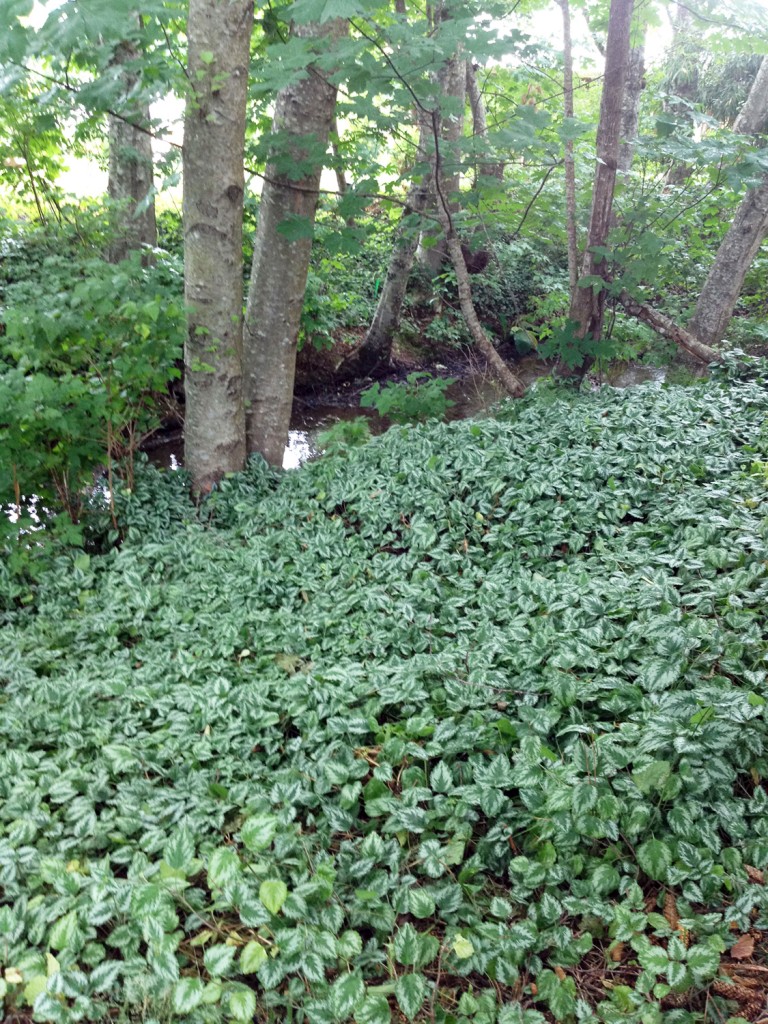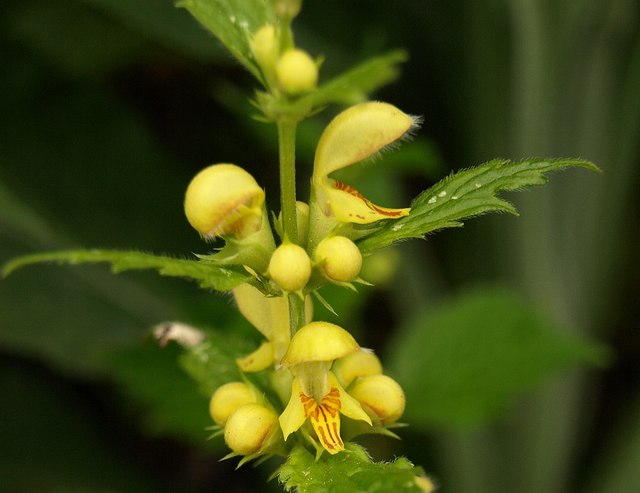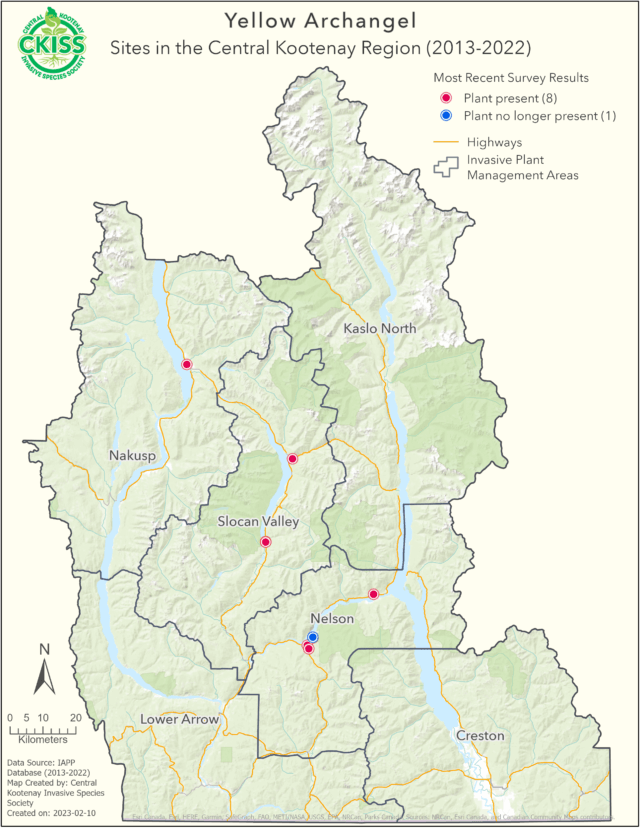Lamiastrum galeobdolon
Description
- Yellow archangel (also called lamium) is a low growing, ground covering plant.
- Its stems and stolons are square as it is a member of the mint family.
- Leaves are hairy, oval to heart shaped, and toothed with silver-grey markings.
- Flowers are small, helmet shaped and yellow with orange or brown markings.
- Grows in partial to full shade, able to grow in forested or otherwise shaded areas.
Consequences of invasion
- Yellow archangel can create dense ground cover, causing a reduction in species diversity.
- It does not offer a source of food for wildlife, its dense growth reduces availability of native plants for wildlife.
- This plant can outcompete shade tolerant agricultural crops.

Introduction and spread
- This plant is sold to gardeners as a groundcover.
- Horizontally spreading stems called stolons allow the plant to rapidly cover an area.
- Vegetative reproduction is the primary mode of reproduction. A small piece of the stem of this plant can root to grow a new plant. Therefore, cutting, mowing or composting this plant could actually facilitate the spread of the plant to new areas.
- The secondary mode of dispersal for this plant is by seed, the seeds can be transported by human, animal or insect activity. Ants have been noted to carry the seeds distances up to 70 metres.
- These characteristics allow yellow archangel to easily escape from gardens and spread into natural ecosystems.
Status in the CKISS region
- Yellow archangel is classified as Contain on the CKISS Annual Priority List.
- It is present in limited distribution across the CKISS region.
- The goal is to prevent current infestations from spreading to new areas.
- Please report sightings of this species.
- To learn more about how CKISS classifies and manages invasive species, see our Invasive Species Priority Lists page.
Integrated pest management options
- Prevention is key – do not purchase or plant yellow archangel. Watch for this plant in basket arrangements. Click here for more tips on how to keep your garden invasive free. Become PlantWise and learn about Grow Me Instead.
- Existing patches can be controlled by regular digging or hand-pulling, but the entire root system needs to be removed for the treatment to be effective. This process will need to be repeated over several years.
- This plant spreads easily through stem cuttings, so be sure to bag plant parts and dispose of them securely.
- Sheet mulching can be effective, but be wary of escaping plants or any holes in the sheet material.
- Chemical treatments may be used depending on the surrounding habitat, contact a professional.


